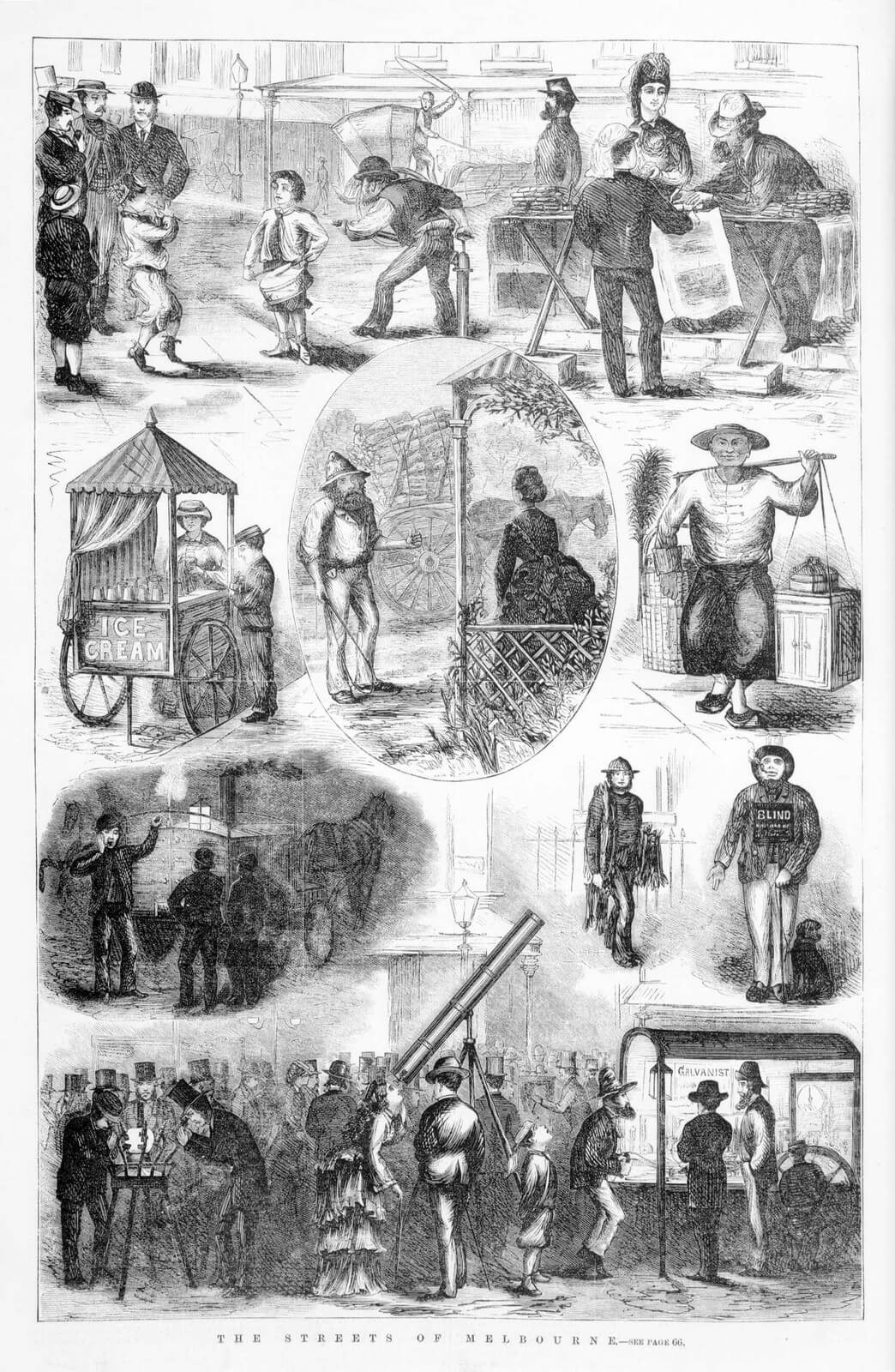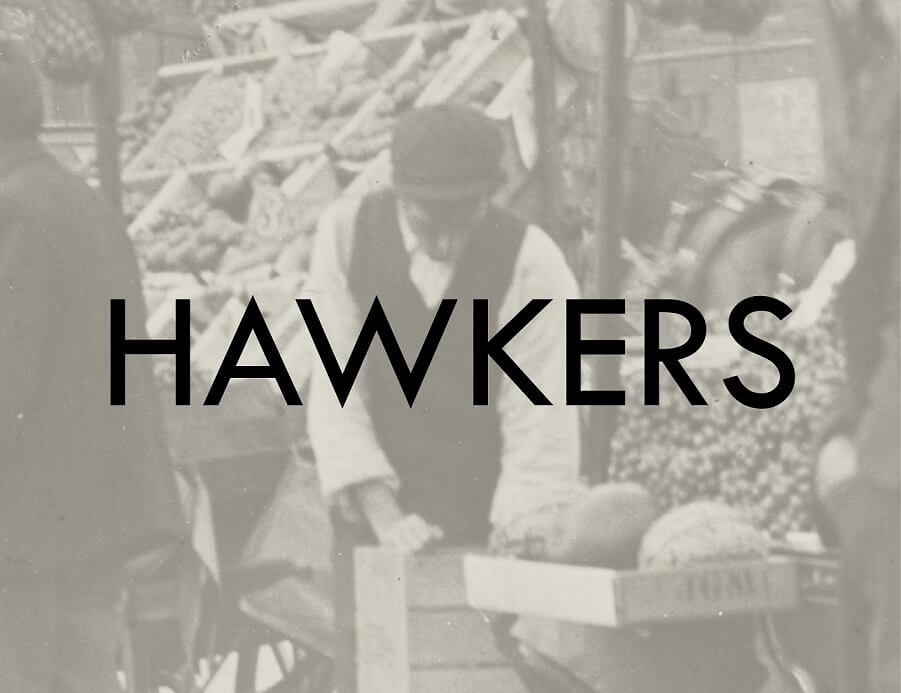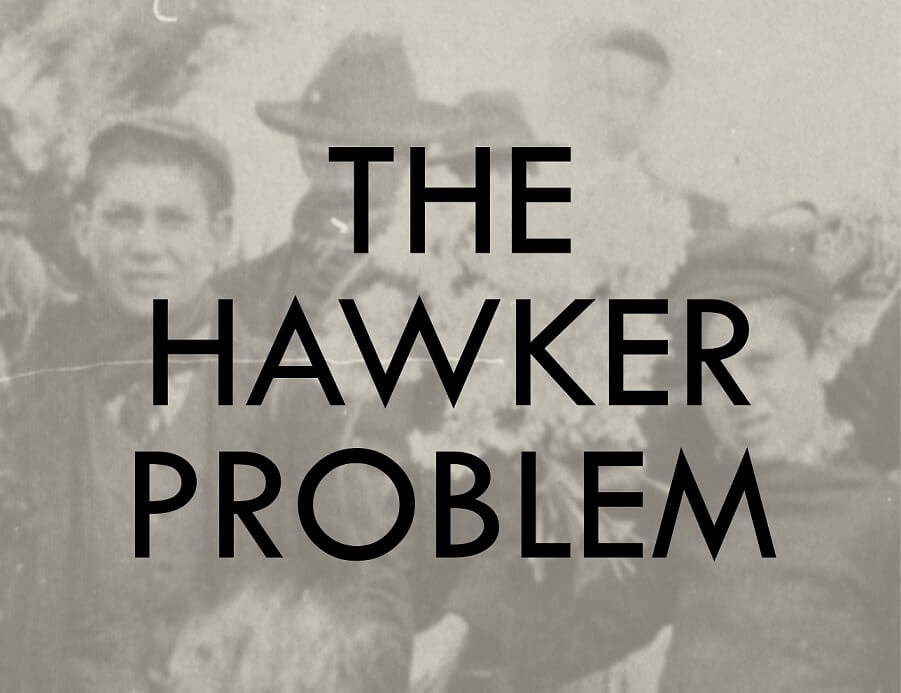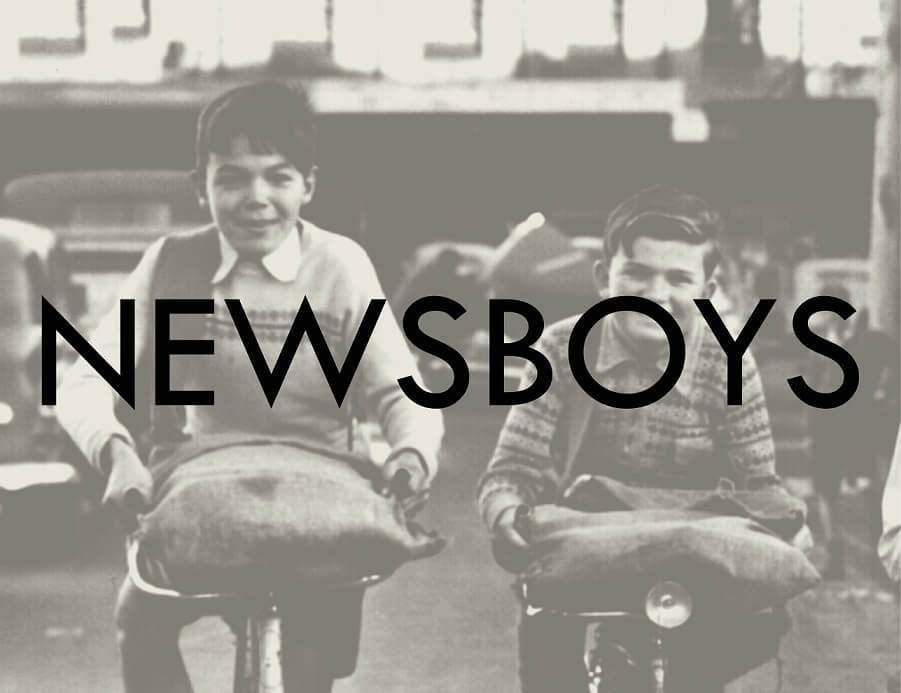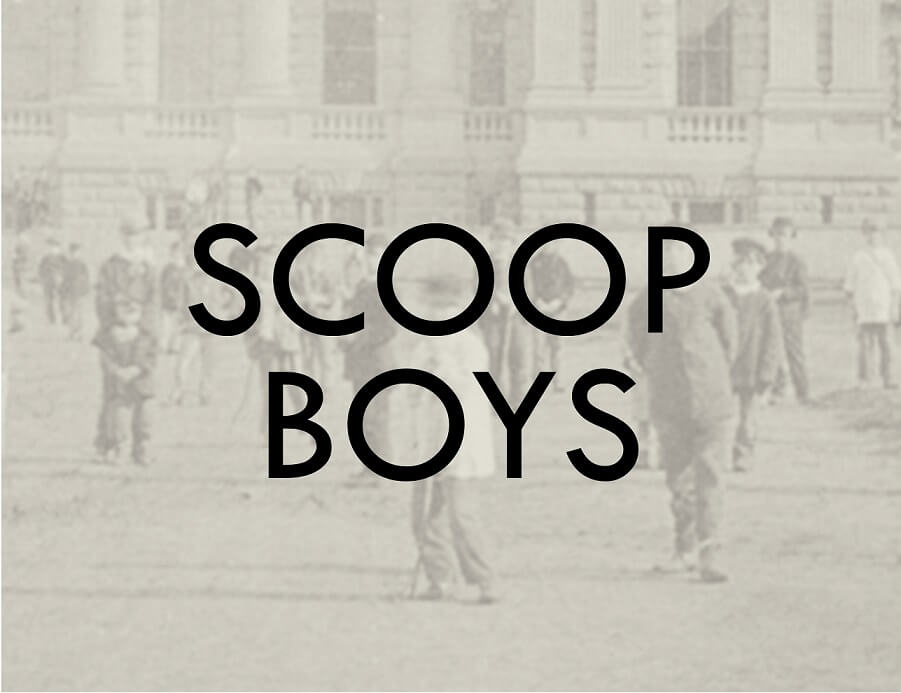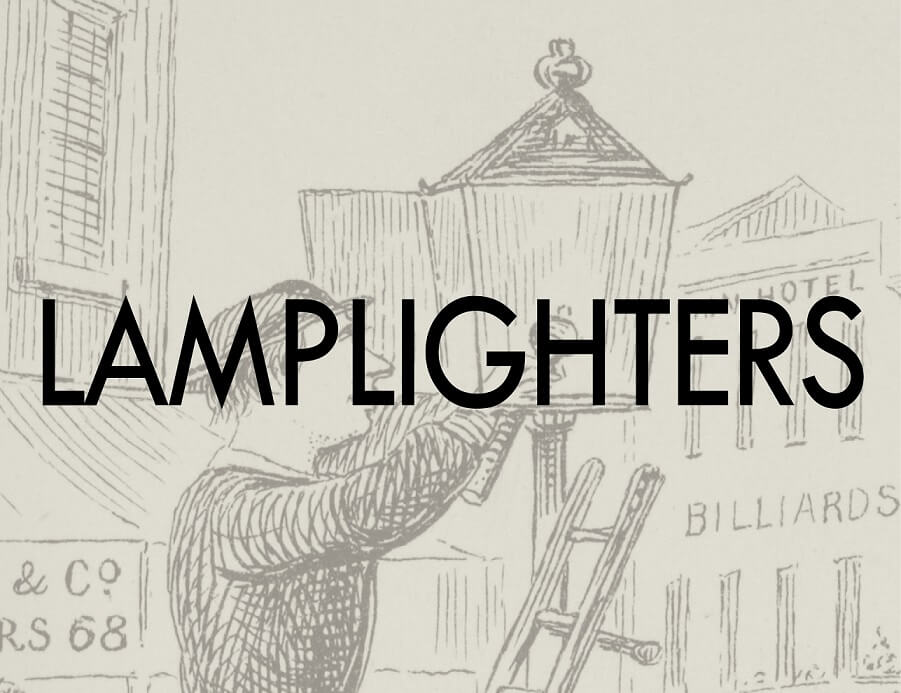The hawker, the fruit vendor, the match seller, the pavement artist, the mendicant pure and simple – these are some of the people who live in the Melbourne streets…
Early Melbourne was a lively place. All kinds of people earned a living on the streets, their trade calls mingling with the sounds of horse-drawn traffic, delivery carts, factory whistles and church bells. City-dwellers could buy a variety of goods from street stall vendors or roving ‘hawkers’, many of whom worked long hours to make a precarious living. It was dangerous on the streets and most hawkers were men or boys.
Progress
In the Factory
In the Office
In the Home
On the Water
In Print
On the Land
-On the Street
On the Tracks
On the Road
In the Shadows
Odd Jobs
After 1900 much of this changed. Hawkers were gradually pushed out of the city, first to the margins and then banned altogether. By the 1920s only the newsboys remained.
Illustrated Australian News for Home Readers, 20 April 1874
Reproduced courtesy State Library Victoria
The following text accompanied the image:
THE STREETS OF MELBOURNE.
This engraving portrays some of the most observable scenes that attract attention every day in the most crowded streets of the metropolis. The two boys depicted at the top of the page, in the left-hand corner, are well known in Melbourne. One youth not only plays on a common tin whistle, but also dances to his own music, while his brother beats time on a kettle-drum. These boys do not play and dance like the pair in the Deserted Village story, “to tire each other down”, but they dance and play for bread. Not long ago these lads were brought before one of the city magistrates for obstructing the public thoroughfare. It was disclosed during the hearing of the case that by their efforts a widowed woman, their mother, and two or three other children, were maintained. The boys were discharged, and “recommended'' to go to school every evening. The lads returned perforce to their street occupation, and are now to be seen every day in Bourke-street, collecting admiring crowds of street loiterers to witness their performance. The man represented as standing in the road-way, using the hydrant, is one of the many men employed by the City Corporation to water the streets by these means in the summer months. Were it not for the use of these hydrants in the dry, hot weather, the dust in Melbourne would be intolerable. As it is, they only lessen, they do not prevent, the evil. The right hand corner sketch represents the news vendor, who generally establishes himself at the corner of some main thoroughfare. He not only sells newspapers of all kinds, but provides wrappers, gum, and pens and ink for posting them. The ice cream stall is largely patronised by boys and girls in the hot weather. What the ice cream sold at 3d. per glass is composed of, or how far it pleases the palate, is more than we are able to say. “The wild wood-carter” of Nunawading negotiating with the lady under the verandah is the central sketch.
The Mongolian hawker represents a large class who amble along under bamboo sticks, to which are suspended loads a pack mule would think no joke. They sell fruit, vegetables, tea, furniture dusters, and other trifles, and many do a fine profitable trade.
The man represented as in the act of crying out his wares is what is known as a “saveloy man.” These people belong to a craft who minister to the wants of the hungry at night when the eating houses are closed. He is provided with what in the darkness looks very like a traction engine. This impression is encouraged when the spectator sees a glowing fire and hears a shrill whistle through which steam is occasionally blown off. If you look away from the furnace, at the back of the vehicle, you will see that it is drawn by a horse. The owner of this elaborate concern dispenses hot saveloys, hot pies, hot potatoes, and other such dainties for the most trifling consideration. At day-break he drives home, and the early eating-houses then take up the subject afresh, so that at no time during the twenty-four hours need a man be hungry in the streets of Melbourne, provided he has money in his pocket.
The vendor of rabbits and hares generally makes his shrill voice heard every day. Hares are becoming plentiful. Rabbits are abundant, and are sold for 1s. per pair. In many places in the Western district rabbits have so overrun the country that the landowners are obliged to pay men to destroy them.
The picture at the bottom of the page represents the electrician and the street astronomer. For the reasonable sum of 3d. you can be shocked till you stand on the tips of your toes. For the same small sum you can examine the belts and moons of Jupiter, the dense atmosphere of red Mars, the deep valleys of the moon, or the lofty mountains of bright horned Venus.
Author: Ann Wilcox
Next topic: On the Tracks
Further Reading
Alexander Sutherland, Victoria and its metropolis: past and present, Melbourne, McCarron, Bird, 1888
Alleyne Best, The history of the Municipal Employees Association, Carlton, Victoria, Federated Municipal and Shire Council Employees' Union of Australia, Victorian Division, 1986
Andrew J. May, Melbourne Street Life, North Melbourne, Australian Scholarly Publishing Pty Ltd, 1998
Barbara Minchinton & Sarah Hayes, ‘Dating Melbourne's cesspits: digging through the archives’, Provenance: The Journal of Public Record Office Victoria, issue no. 16, 2018
Bernard Barrett, The inner suburbs : the evolution of an industrial area, Carlton, Victoria, Melbourne University Press, 1971
David Dunstan, Governing the Metropolis, Carlton, Victoria, Melbourne University Press, 1984
David Holloway, ‘More on Inspectors of Nuisances, and others’, Ancestor: Quarterly Journal of The Genealogical Society of Victoria, Vol. 27, No. 3, September 2004
Dick Mack, ‘Inspector of Nuisances’, Ancestor: Quarterly Journal of The Genealogical Society of Victoria, Vol. 27, No. 2, June 2004
Exhibition catalogue, ‘Melbourne's Newsboys’, City Gallery, Melbourne, 3 May to 24 July 2005
Graeme Davison, The Rise and Fall of Marvellous Melbourne, Carlton, Victoria, Melbourne University Press, 2014
Hicks, Paul ‘“The sanitary defence”: Housing, disease and health administration, 1888-1918’, in Melbourne Centre Stage, the Corporation of the City of Melbourne, special edition of Victorian Historical Journal, October 1992
Miles Lewis, Melbourne: The City’s History and Development, for the City of Melbourne, November 1995
Sarah Hayes and Barbara Minchinton, ‘Cesspit formation processes and waste management history in Melbourne: evidence from Little Lon’, Australian Archaeology, Vol. 82, No. 1, 2016
Simon Sleight, Young People and the Shaping of Public Space in Melbourne 1870-1914, Surry England, Ashgate Publishing Limited, 2013
Susan Priestley, Making their Mark, McMahons Point, NSW, Fairfax, Syme & Weldon Associates, 1984
Tim Callanan, ‘Even at the height of the gold rush, Melbourne was an absolute dump’, article published on ABC News online, 27 June 2021
Winsome Roberts with foreword by Alan Mayne, Molesworth Street: a North Melbourne neighbourhood, 1840-1905, North Melbourne, Hotham History Project, 2002
Public Record Office Victoria (PROV):
VPRS 807: Inward Correspondence Files (Victoria Police) (1893–1894)
VPRS 937: Inward Registered Correspondence (Victoria Police) (1868–1893)
VPRS 3181: Town Clerk’s Files, Series 1
VPRS 4527: Ward Registers
VPRS 9448 Duty Diary of Assistant Inspector of Nuisances
Victorian Acts of Parliament (listed in chronological order):
Hawkers and Pedlers Statute 1865
Education Act 1872
Neglected Children’s Act 1887
Hawkers and Pedlers Act 1890
Street Trading Act 1925
With special thanks to Heather McKay, Reader Services and Local Studies Librarian, Melbourne Library Service for her help with research.

